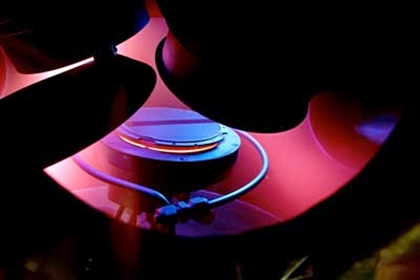|
NOVIDADES
Nanostructured layers boast countless potential properties – but how can the most suitable one be identified without any long-term experiments? A team from the Materials Discovery Department at Ruhr-Universität Bochum (RUB) has ventured a shortcut: using a machine learning algorithm, the researchers were able to reliably predict the properties of such a layer. Their report was published in the new journal Communications Materials ("Predicting structure zone diagrams for thin film synthesis by generative machine learning").  A look into the sputtering system where nanostructured layers are generated. Image: Lars Banko
“In order to find the optimal parameters for an application, it used to be necessary to conduct countless experiments under different conditions and with different compositions; this is an incredibly complex process,“ explains Professor Alfred Ludwig, Head of the Materials Discovery and Interfaces Team. Findings yielded by such experiments are so-called structure zone diagrams, from which the surface of a certain composition resulting from certain process parameters can be read. “Experienced researchers can subsequently use such a diagram to identify the most suitable location for an application and derive the parameters necessary for producing the suitable layer,” points out Ludwig. “The entire process requires an enormous effort and is highly time consuming.” “We fed the algorithm with a sufficient amount of experimental data in order to train it, but not with all known data,” stresses Lars Banko. Thus, the researchers were able to compare the results of the calculations with those of the experiments and analyse how reliable its prediction was. The results were conclusive: “We combined five parameters and were able to look in five directions simultaneously using the algorithm – without having to conduct any experiments at all,” outlines Alfred Ludwig. “We have thus shown that machine learning methods can be transferred to materials research and can help to develop new materials for specific purposes.” Ruhr-Universität-Bochum. Posted: Mar 26, 2020.
|
|||||||||||||||||||||||||